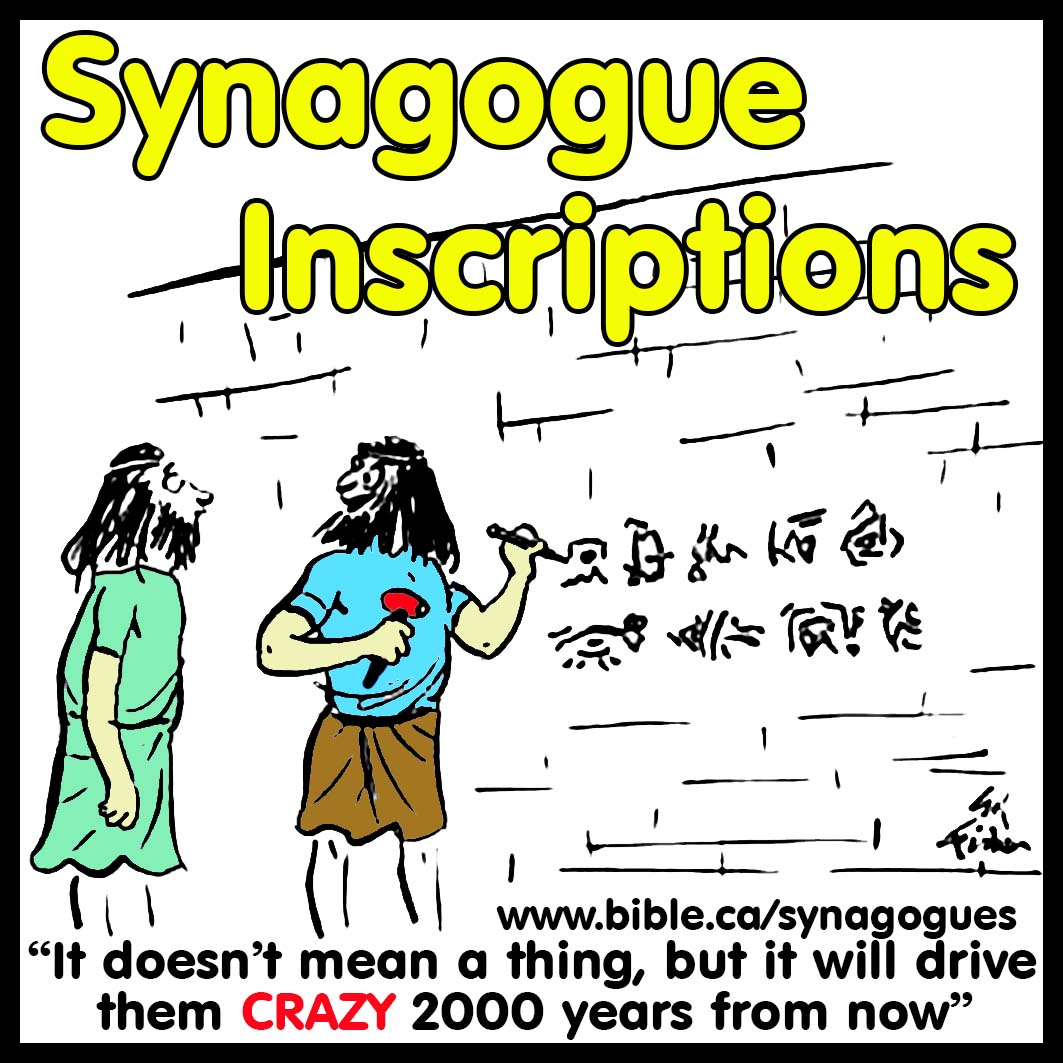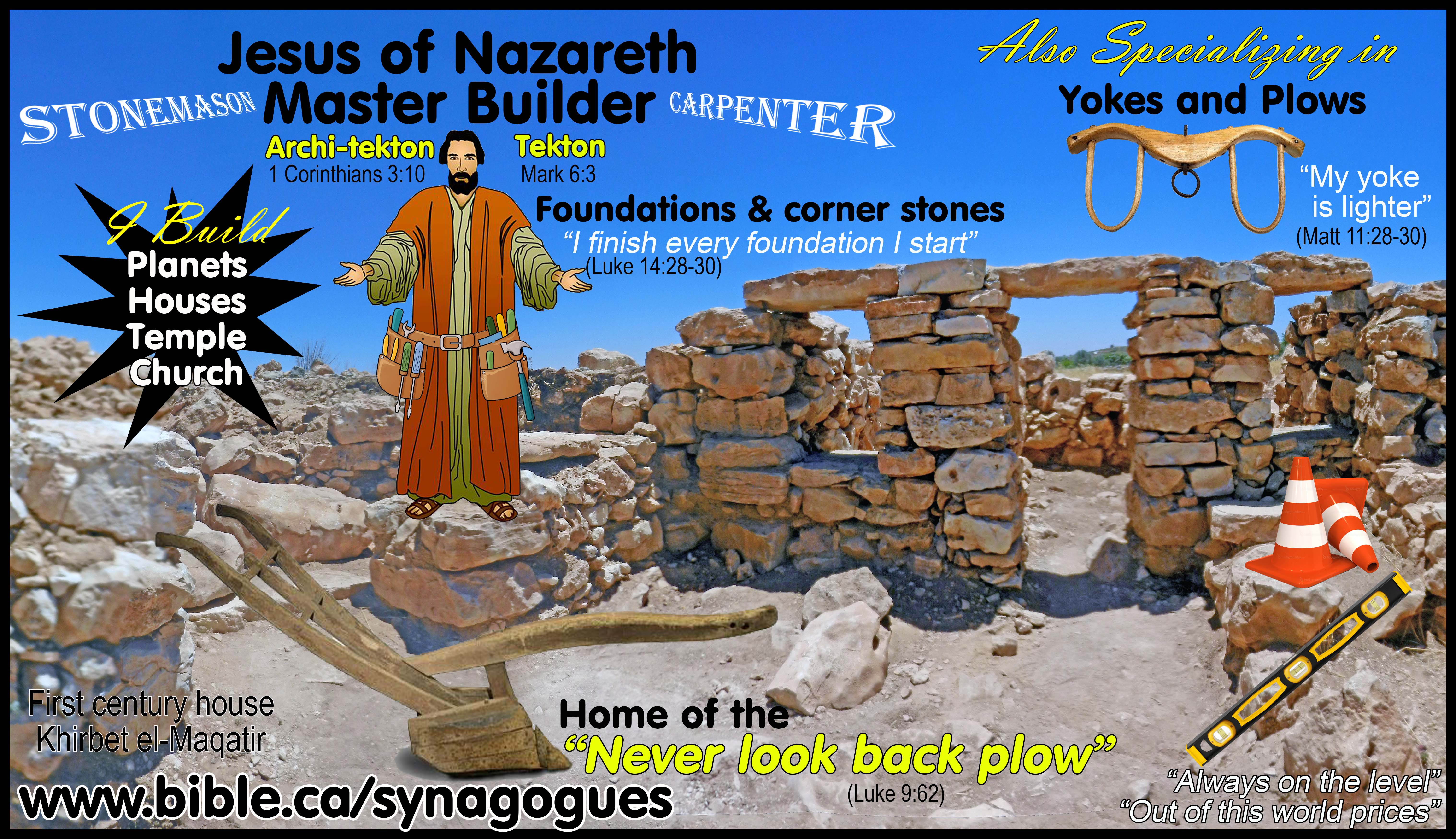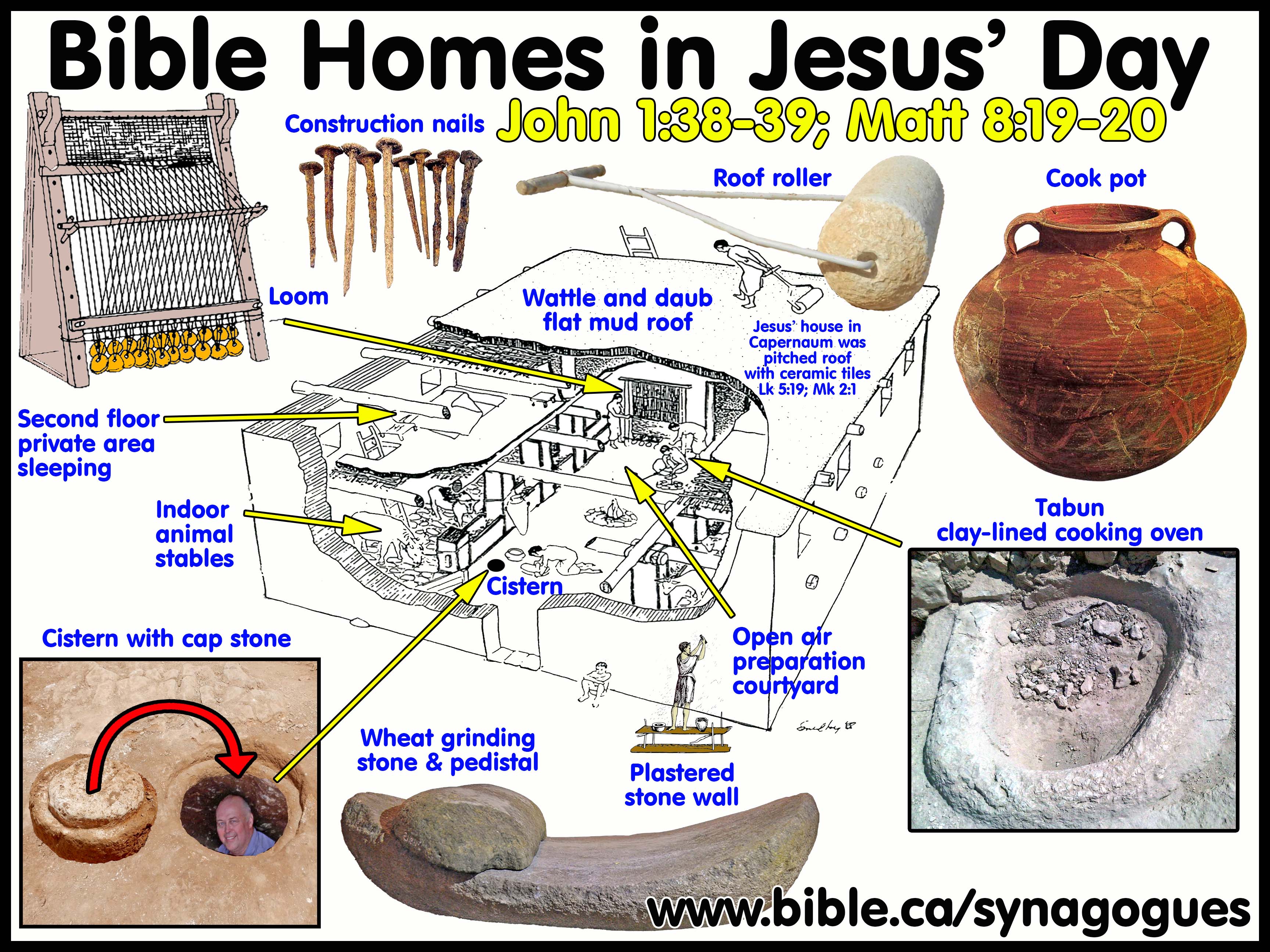Qatzion Synagogue and
Lintel Dedicatory Inscription
1.
The inscription at Qatzion:
a.
Date: Between 196 and 198 C.E., probably 197 C.E.
b.
Literature: Kohl and Watzinger, Antiken Synagogen, 160-61; Chiat,
Handbook; 62-63; Hachlili, Land of Israel, 212, 396-97; Foerster, Galilean
Synagogues, 103-5; Fine, "Late Antique Palestine"; Runesson, Origins,
175, n. 18; Levine, Ancient Synagogue, 84.
2.
The text of the lintel inscription is translated by Chiat as follows:
“For the salvation of the Roman
Caesars,
L[ucius] Sept[imius] Severus Pius
Pert[inax] Aug[ustus], and
M[arcus]
Aur[elius] A[nton]inus [[and
L[ucius]
Sept[imius] G]]eta, their sons, by
a
vow of the Jews.”
3. Discussion:
a.
Located 9 kilometres northeast of Safed, the remains of this edifice
were first discovered in the 19th century.
b.
Dedicatory inscriptions for the health or long life of non-Jewish rulers
and emperors are well attested in Jewish inscriptions from Egypt in relation to
proseuchei (prayer halls) or specific structures within them (cf. below, Nos.
144, 150-152, 156, 158, 159). The Mindius Faustus inscription from Ostia,
dating to the second century (No. 176), is another example. The present
inscription is the only one of its kind from the land of Israel. However, it
has not been established whether the structure is in fact a synagogue
(Foerster), or if the Jews mentioned donated a non-Jewish temple to
Graeco-Roman inhabitants of the area (Kohl and Watzinger; Fine). The fact that
a Jewish community could donate a temple to non-Jews should not surprise us,
since non-Jewish donations of synagogues to Jewish Diaspora communities are
well attested (cf. No. 103, Julia Severa). Modem religious sensitivities should
not be applied to ancient social systems of benefaction. Until further excavations can determine the nature of the
edifice, it seems best to understand the remains as belonging to a non-Jewish
temple.” (The Ancient Synagogue from its Origins to 200 AD, Anders
Runesson, p64, 2008 AD)
c.
“The archaeological remains of the building connected to the Theodotos
inscription are too scanty for this edifice to be included in the present
discussion, even if its location is almost certainly just south of the temple
mount where the inscription was found. Similarly, we have not enough
information on the Qatzion building from the
second century, nor is it possible to discuss the 'prayer
room' of Shuafat. Future excavations on these three sites are indeed
welcome and may solve many problems pertaining to the development of early
'synagogues'.” (The origins of the Synagogue, Anders Runesson, footnote 395,
p359, 2001 AD)
4.
Comments:
a.
After investigations by Kohl and Watzinger, as well as others, the site
was abandoned only to be rediscovered in the late 20th century.
b.
Since the building has not been completely excavated, further
investigations are crucial in order to enable well-founded judgments regarding
the nature of this structure.
c.
At the moment, the most important find is a lintel containing a six-line
Greek dedicatory inscription mentioning the Roman emperor Septimius Severus. It
securely dates the structure to 197 C.E.
By
Steve Rudd 2017: Contact
the author for comments, input or corrections
|
Quick links
|
|
|
Ancient Synagogues

Go to: Main Start Page
|
|
|
By Steve Rudd
2017: Contact
the author for comments, input or corrections
|
|
|
Quick links:
Master introduction: Summary overview is the place to start to tie it all
together.
Providence: God’s
eternal plan: The providential transition from Temple to Synagogue to Church
Origin: Synagogues
originated at Alexandria Egypt in 280 BC spawned by the Septuagint
Jesus the Messiah of the Tanakh:
1.
First Century Jewish Messianic Expectation: As
witnessed in the Dead Sea scrolls.
2.
Looking for the wrong thing: Mistaken
Jewish ideas of the Messiah in 30 AD.
3.
Jesus fulfilled Prophecy: Master
list of fulfilled messianic prophecies
4.
Jesus fulfilled Prophecy: "He
shall be called a Nazarene (branch)" Matthew 2:23
5.
Jesus fulfilled Prophecy: “Jesus
would rise the third day” 1 Corinthians 15:3-4
Synagogue Architectural Prototypes in the Church:
1.
Standard architectural synagogue typology: Introduction,
Master Chart
2.
Mikveh for Ritual Purity: The
Christian Maker
3.
Ritual purity stone Vessels: Stoneware
cups and wash basins
4.
Freestanding Columns: Antitype
of Christians
5.
Artwork: Heart-Shaped
Columns
6.
The bema: Prototype
of the Church Pulpit
7.
Synagogue Benches: Metaphor
of Equality in Christ
8.
Women Seating in Synagogues: Not
segregated from men
9.
The Moses’ Seat: Metaphor
of Pride
10.
Niches & Ark of The Scrolls: Prototype
of Church Apse
11.
Table of the Scrolls: Prototype
of Communion Table
12.
Byzantine Church Architecture: Octagonal
and Basilica
13.
Orientation: Early
Synagogues did not Point to Jerusalem
14.
The Church replaced the Temple: Replacement
theology is pure Christianity
Synagogue Worship Prototypes in the Church:
15.
Worship prototypes: Introduction
and Master Summary Chart
16.
Collective Names of Synagogues: House
of Prayer, Temple, Church
17.
Organization of Synagogues: Elders,
officials, attendants, Independent, autonomous
18.
Attendance: Weekly
Sabbath Assemblies in Synagogues absent from Tanakh
19.
Public Bible readings: Preaching
and Teaching In Synagogues
20.
Greek Septuagint: The
Standard Tanakh of every ancient synagogue
21.
Greek Septuagint scroll of the Twelve Minor Prophets written in 50 BC
22.
Prayer in Synagogues: “House
of prayer” Proseuche
23.
Food: Sacred
Passover Meals, No Common Meals In Synagogues
24.
Sermon Topics in Synagogues: How
Christians used the Tanakh to convert Jews
25.
Singing in Synagogues: Non-Instrumental
Acapella Responsive Singing
26.
Benevolence Money: Freewill
Weekly First fruits Collections for poor in Synagogues
27.
Education: Schools
and Literacy of Jews In Synagogues
28.
Role of Women in Synagogues: Never
leaders, preachers but never segregated
29.
Sanctuary Status: Refugees
seeking Asylum in Synagogues
30.
Appendages: Hostels,
Housing and Food Banks in Synagogues
31.
Civil Court: Judgements,
beatings and scourging in Synagogues
32.
Civic Meetings: Political
Town Hall assemblies in Synagogues
33.
Christians replaced Jews: Replacement
theology is pure Christianity
Synagogue Occupation Date (SOD)= Excavation date + Inscriptional date + Literary
date
Allusions: Synagogue
worship allusions and imagery in the New Testament
Master builder Stonemason Jesus: “Upon
this Rock I will build My church”
Everyday life: Archeology of Everyday Life and Homes at the time of
Jesus
Master List: Master list of
First Temple Period, Pre-70 AD Synagogues
Attend a church you can read about in the Bible: Click here to find
a church near you.
By Steve Rudd 2017: Contact the author for
comments, input or corrections
|
|
|
|
|
|

Go to:
Master Synagogue List
|

Go to:
Jewish
Messianic Expectations in DSS
|

Go to:
Map
of Synagogue Sites
|
|
|
|
|
|
Excavations

|
Inscriptions

|
Literature

|
|
|
Go to:
Synagogue
Excavations
|
Go to:
Synagogue
Inscriptions
|
Go to:
Synagogue Literary
Sources
|
|
|
|
|
|

Jesus
Master Builder of the Church/Temple
|

Archeology
of First Century Houses
|
|
|
By Steve Rudd 2017:
Contact the author for
comments, input or corrections
|
|
|
|
|
|
|
|
|
|
|
|
|
|
|
|
|
Jesus your messiah is
waiting for you to come home!
|
|

|
Why not worship with a first century New Testament church
near you, that has the same look and feel as the Jewish Synagogue in your own
home town. As a Jew, you will find the transition as easy today as it was for
the tens of thousands of your forefathers living in Jerusalem 2000 years ago
when they believed in Jesus the Nazarene (the branch) as their messiah. It’s
time to come home!
Click here to find
a church near you.
|
By
Steve Rudd: Contact
the author for comments, input or corrections.

Go to: Main Ancient Synagogue Start Page
Go To Start: WWW.BIBLE.CA










